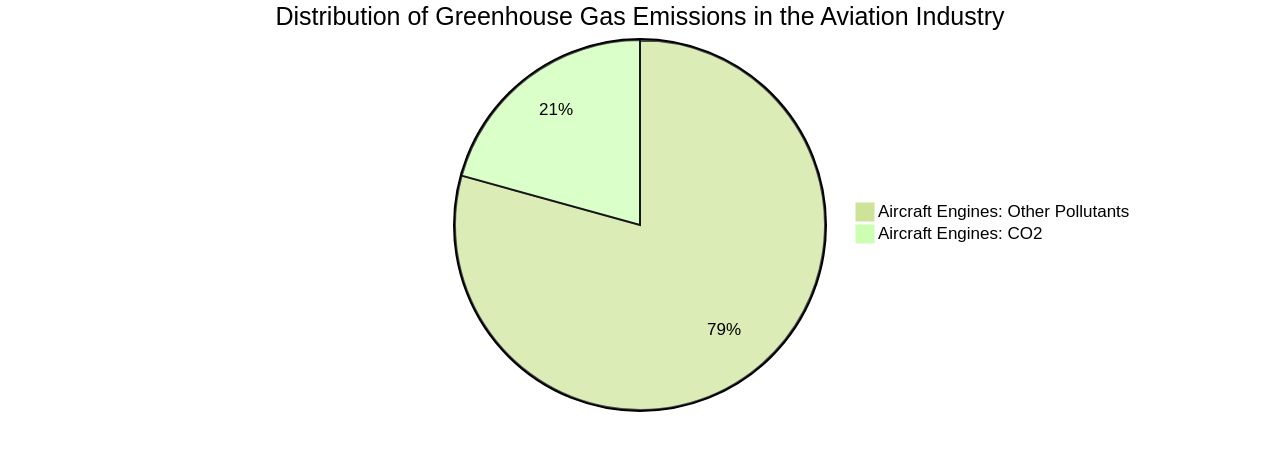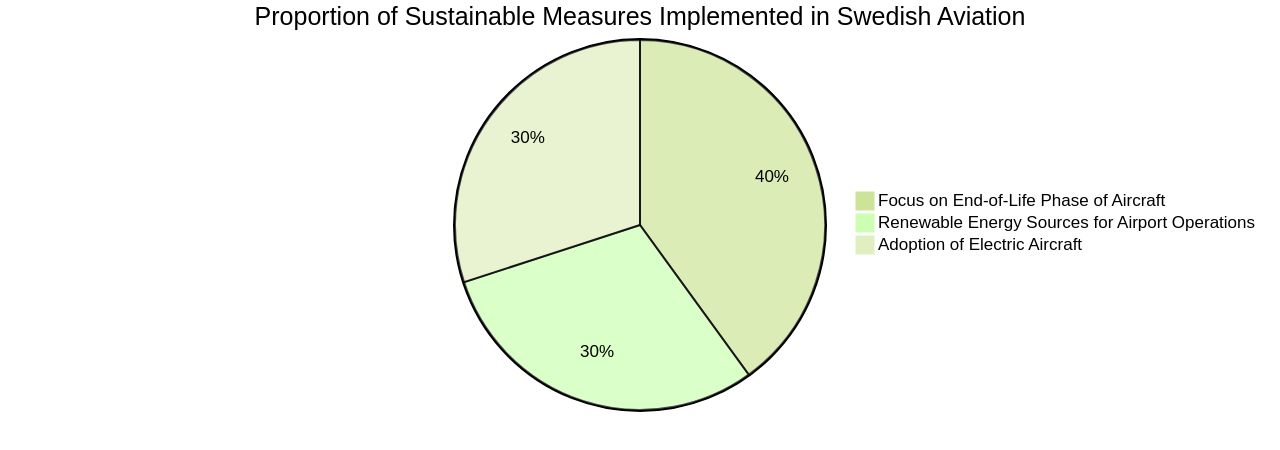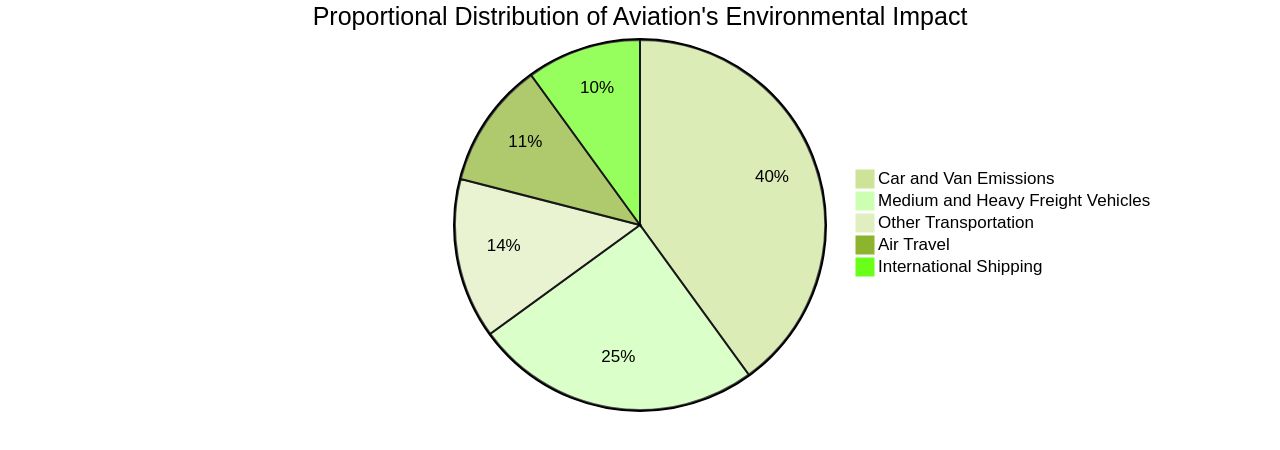Introduction
The aviation industry's environmental impact is under scrutiny due to its significant greenhouse gas emissions. Despite the goal of achieving net-zero emissions by 2050, the adoption rate of green technologies is not keeping pace.
However, some European regional airports have already achieved a net-zero balance for their emissions, setting an industry benchmark. To effectively decarbonize, the industry must prioritize carbon mitigation strategies, such as Sustainable Aviation Fuel (SAF) and electrification. Understanding the aviation industry's environmental impact is crucial for driving sustainability and implementing effective solutions for a net-zero future.
Understanding the Aviation Industry's Environmental Impact
The aviation industry, known for its substantial environmental impact, is under significant scrutiny due to its greenhouse gas emissions. Aircraft engines, reliant on fossil fuels, release carbon dioxide (CO2) and other harmful pollutants, contributing to air pollution and posing health concerns.
Despite the ambitious goal of achieving net-zero emissions by 2050, the adoption rate of green technologies is not keeping pace, indicating the possibility of missing this target, especially if air traffic continues to grow faster than global GDP. Interestingly, some European regional airports have already reached a net-zero balance for their emissions, setting an industry benchmark.
For example, Finavia has significantly cut its carbon emissions by using renewable energy at four of its airports. However, while the aviation industry's fuel efficiency has improved by roughly 39 percent from 2005 to 2019, the absolute growth of emissions has surpassed these improvements.
To effectively decarbonize, the industry must prioritize various carbon mitigation strategies and focus on both immediate and long-term initiatives. One such promising measure is Sustainable Aviation Fuel (SAF), despite its current infancy and cost.
SAF, derived from renewable biomass, waste resources, or captured carbon dioxide and green hydrogen, can significantly reduce lifecycle greenhouse gas emissions compared to traditional jet fuel. Innovative solutions like Unifuel.tech's Flexiforming offer an alternative path towards decarbonization. Flexiforming allows operators to control their decarbonization speed and can be implemented in an idle hydrotreater or reformer, which reduces both capital expenditure and carbon intensity. Additionally, the electrification of aircraft is another potential solution, with the first electric aircraft already in use for pilot training and short flights. These electric aircraft, when powered by green electricity, have a lower climate impact than their fossil fuel counterparts after just a quarter of their expected lifespan. Therefore, understanding the aviation industry's environmental impact is crucial for driving sustainability within the sector and identifying and implementing effective solutions for a net-zero future.

Sustainability Transitions in Aviation: A Case Study of Sweden
Sweden, with Stockholm-Arlanda Airport as its beacon, has shown a strong commitment to sustainable aviation. The airport has utilized renewable energy sources like solar and geothermal for its operations, thus reducing carbon emissions. As part of the Swedavia network, Stockholm-Arlanda Airport is leading the way towards creating environmentally-friendly airports.
Swedavia's vision is clear - a future where air travel has minimal environmental impact and ensures smooth and efficient transportation. The company's goal is to have all its airports certified at the highest level for sustainability by 2027. The airport's sustainable measures aren't restricted to operations but also include the end-of-life phase of aircraft.
A 2023 report by the European Union Aviation Safety Agency (EASA) pointed out the potential environmental impact of this phase and the areas for improvement. Outside of airport operations, steps are being taken to promote sustainable aviation. The Swedish aviation industry is venturing into the realm of electric aircraft.
Chalmers University of Technology's research indicates that battery-powered aircraft, if powered by green electricity, could considerably lower the environmental impact of aviation. In the quest for further decarbonization, solutions like 'flexiforming' offered by Unifuel.tech are emerging. This technology allows operators to choose their decarbonization pace and can be implemented in an idle hydrotreater or reformer.
This not only reduces capital expenditure but also lowers carbon intensity. Flexiforming could be a game-changer in the industry, pushing the boundaries of sustainable aviation. The experiences of the Swedish aviation sector provide valuable insights for other countries and companies aiming to transition towards sustainable aviation.

Policy Integrating Sustainability in Aviation
The integration of sustainability into aviation is significantly influenced by regulatory frameworks and strategic policies. These measures, such as the European Union's Renewable Energy Directive, prompt the incorporation of renewable energy, specifically sustainable aviation fuels (SAFs), in the transportation sector.
The directive not only fosters the adoption of SAFs but also stimulates the advancement of renewable energy resources for aviation. The Swiss Confederation's ongoing efforts to monitor and report on aviation's sustainable development signifies a proactive approach to this matter.
Their commitment is evident in their extensive research into the environmental impact of aviation, including carbon emissions and contrail formation, and the potential role of SAFs in mitigating these effects. The Climate and Innovation Act, approved by the Swiss electorate in June 2023, is a salient example of incorporating aviation into a country's net-zero target.
The aviation industry's goal aligns with this, but it necessitates substantial investment in technical measure research and development in the ensuing years. The primary technical strategy to curb carbon emissions involves the use of SAFs, alongside efficiency enhancements in aircraft fleets and operations.
However, the road to net-zero emissions by 2050 is fraught with challenges. If air traffic continues to grow faster than global GDP, the industry may fall short of its ambitious goal. Commercial aviation accounts for about 3.5% of the overall human-induced changes to the Earth’s energy balance, with CO2 emissions from aviation doubling since the mid-1980s, posing a significant threat to the 1.5°C warming limit by 2050. Hence, these case studies serve as valuable frameworks for nations striving to instill sustainable practices in their aviation industry. The transformation to sustainable aviation is a complex, multifaceted task that requires comprehensive policies, substantial investment, and innovative strategies.

Technological Innovations and Sustainable Fuels
The transition towards a more sustainable aviation sector is driven by technological advancements and the exploration of sustainable fuels. Sustainable Aviation Fuels (SAF) are a promising solution, derived from renewable resources like biomass, waste oils, and algae.
While their adoption is increasing globally, the production of SAF is still limited, and demand is expected to surpass supply. The aviation industry, responsible for around 2-3% of global CO2 emissions, is under significant pressure to decarbonise.
The International Civil Aviation Organization has set a net-zero carbon emissions target for the industry by 2050. SAFs are seen as the primary tool to achieve this, but there are still challenges related to affordability, sustainability, and competition for feedstocks.
The potential of SAF, however, is unequivocal. Derived from a variety of sources and compatible with existing aircraft, SAF plays a crucial role in helping the aviation sector meet its climate targets.
Policies in the European Union and the US are encouraging a shift in fuel sources, with airlines showcasing their efforts through advertising campaigns. Amid these developments, technologies like flexiforming offered by Unifuel.tech are emerging as game-changers. Flexiforming allows operators to control their decarbonization rate and can be implemented in an idle hydrotreater or reformer, reducing capital expenditure and carbon intensity. Unifuel.tech, part of Universal Fuel Technologies, can determine the optimal application for flexiforming based on the operator's feeds, target products, and existing facilities. This advancement underscores the crucial role of technological innovations in steering the aviation industry towards its sustainability objectives.
Conclusion
In conclusion, the aviation industry's environmental impact is a pressing concern. Despite the goal of achieving net-zero emissions by 2050, the adoption rate of green technologies is not keeping pace. However, some European regional airports have already achieved a net-zero balance for their emissions, setting an industry benchmark.
To decarbonize effectively, the industry must prioritize carbon mitigation strategies like Sustainable Aviation Fuel (SAF) and electrification. SAF, derived from renewable biomass or waste resources, can significantly reduce greenhouse gas emissions compared to traditional jet fuel. Electrification of aircraft also shows promise.
The case study of Sweden highlights the country's commitment to sustainable aviation through renewable energy use at Stockholm-Arlanda Airport and efforts to promote electric aircraft. These experiences provide valuable insights for other countries and companies aiming to transition towards sustainability. Regulatory frameworks and policies play a crucial role in integrating sustainability into aviation.
Measures like the European Union's Renewable Energy Directive and Switzerland's commitment to monitor aviation's sustainable development drive the adoption of sustainable aviation fuels (SAFs) and technical advancements. Technological innovations are key drivers in transitioning towards a more sustainable aviation sector. Sustainable Aviation Fuels (SAFs), derived from renewable resources, are seen as a key tool to achieve net-zero emissions by 2050.
In summary, understanding the aviation industry's environmental impact is crucial for driving sustainability within the sector. The case studies presented offer valuable frameworks for nations striving to instill sustainable practices in their aviation industry. Comprehensive policies, substantial investment, and innovative strategies are necessary for successfully transitioning towards a net-zero future in aviation.




